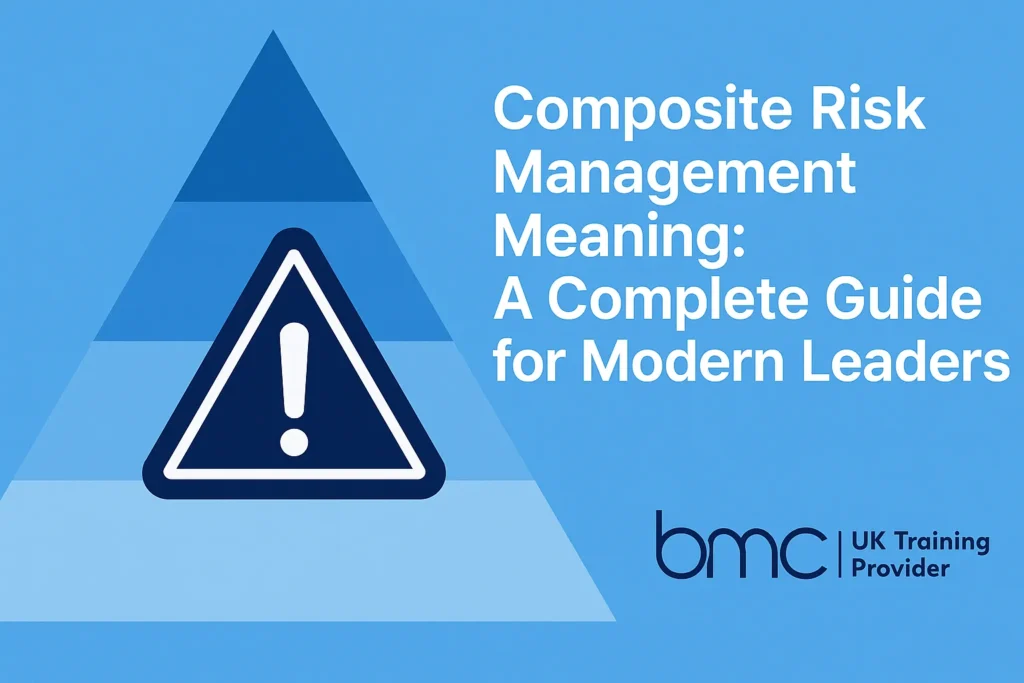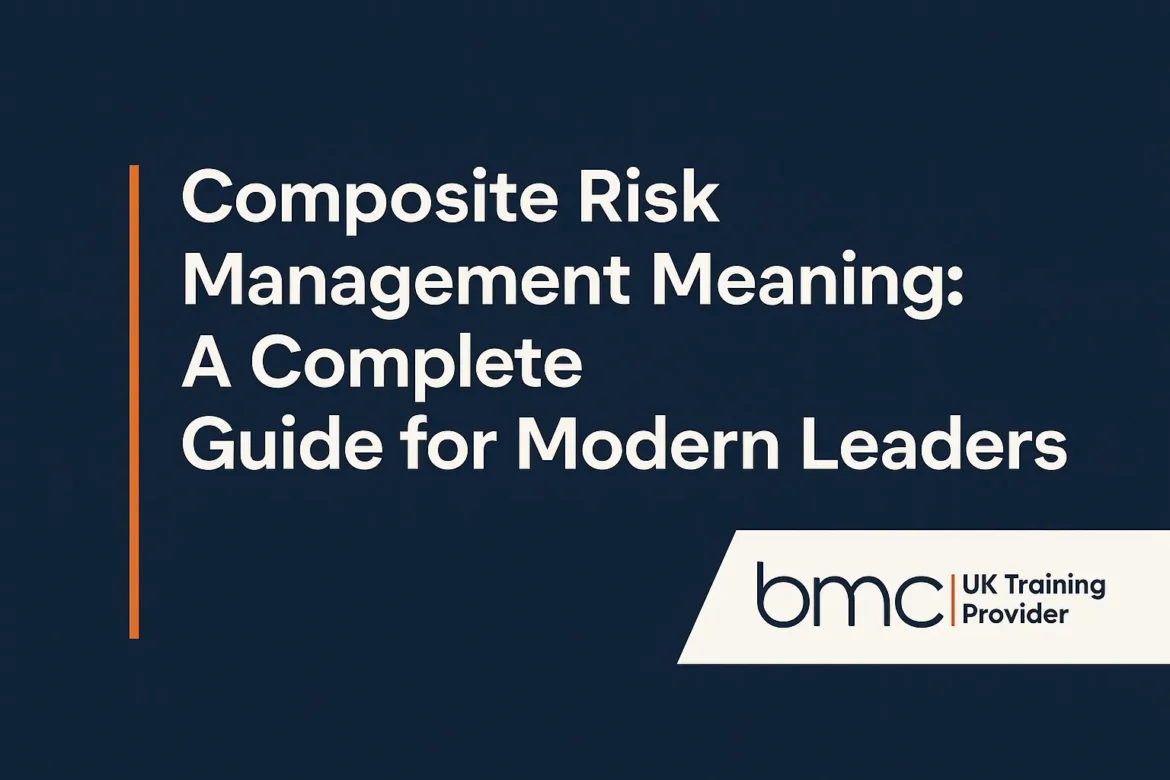Navigating the complexities of modern business requires a strategic approach to managing potential threats. While many organizations focus on individual risks, a more holistic methodology—Composite Risk Management (CRM)—is essential for true resilience and success. This guide will demystify the composite risk management meaning, explore its core principles, and provide a clear roadmap for implementation.
What is Composite Risk Management (CRM)?
Composite Risk Management (CRM) is a systematic process for identifying, assessing, and mitigating interconnected risks that, when combined, can pose a greater threat than the sum of their individual parts. Unlike traditional risk management that often treats risks in isolation, CRM recognizes that failures in one area (e.g., supply chain) can cascade and amplify risks in others (e.g., finance, reputation, and operations).
Key Differentiators:
- Holistic View: It moves beyond siloed risk assessments to consider the entire organizational ecosystem.
- Interconnectedness: It focuses on the relationships and dependencies between different risk types.
- Aggregated Impact: It measures the total, or composite, effect of multiple risks occurring simultaneously or in sequence.
Think of it this way: a single operational error might be a minor issue. However, if that error happens during a cybersecurity attack and a key employee is on leave, the combined, or composite, risk becomes a major crisis. CRM is the framework that helps you anticipate and prepare for these complex scenarios.
Read Also : How to Choose Training Provider: Tips You Must Know
Why Is Composite Risk Management Crucial?
In today’s volatile business environment, the need for CRM is more pressing than ever. Here’s why it’s not just a best practice, but a necessity:
- Complexity: Modern systems—from global supply chains to integrated IT networks—are inherently complex. A single point of failure can trigger a domino effect.
- Speed of Change: Technology and market dynamics change rapidly, introducing new and unforeseen risks.
- Stakeholder Expectations: Investors, customers, and regulators demand robust, comprehensive risk oversight.
By adopting a CRM approach, organizations can build a more resilient foundation, ensuring they are not only prepared for known threats but also agile enough to respond to unexpected, multi-faceted crises.

How to Implement a Composite Risk Management Framework
Implementing CRM is a structured process that requires a top-down commitment and a cross-functional approach.
Phase 1: Identify and Understand Risks
This phase goes beyond simple identification to map out the connections between risks.
- Categorize Risks: Group risks into categories like strategic, operational, financial, and reputational.
- Conduct a Dependency Analysis: Create a risk matrix or a network diagram to visualize how risks influence each other. For example, a data breach (cyber risk) could lead to a loss of customer trust (reputational risk), which in turn could impact revenue (financial risk).
- Example: A manufacturer analyzes the risk of a raw material shortage. They identify its direct impact on production but also its potential to delay product launches, violate client contracts, and strain financial liquidity due to rising costs.
Phase 2: Assess and Prioritize
This phase evaluates the combined impact and likelihood of interconnected risks.
- Quantitative Assessment: Use metrics to measure the potential financial impact.
- Qualitative Assessment: Evaluate the reputational damage or operational disruption.
- Composite Risk Score: Develop a scoring system that accounts for both the individual risk score and the interconnectedness factor.
Read Also : The Complete Guide to Leadership Development Training
When to Apply Composite Risk Management
CRM is not a one-time event; it’s a continuous process that should be integrated into key business activities:
- Before a Major Project: Assess all potential risks before launching a new product, entering a new market, or implementing a new technology.
- During Strategic Planning: Integrate CRM into the strategic planning process to ensure your goals are resilient to future threats.
- In Crisis Scenarios: Use CRM principles to understand the full scope of a crisis and prevent it from escalating.
- For Board-Level Reporting: Provide a comprehensive view of the organization’s risk profile to leadership and the board.
Composite Risk Management vs. Traditional Risk Management
Is it difficult to implement CRM?
While it requires more effort and cross-functional collaboration than traditional methods, the long-term benefits of enhanced resilience and better decision-making far outweigh the initial investment.
Frequently Asked Questions (FAQ)
Q1: Who is responsible for Composite Risk Management?
While risk management teams play a central role, CRM is a shared responsibility. Leaders from every department—from IT to finance to operations—must contribute to the identification and mitigation of interconnected risks.
Q2: What tools are used for CRM?
Tools can range from simple spreadsheets and risk matrices to advanced Governance, Risk, and Compliance (GRC) software that automates the mapping and monitoring of risks.
Q3: How does CRM improve decision-making?
By providing a holistic view of potential threats, CRM allows leaders to make more informed, data-driven decisions that account for second- and third-order effects, not just immediate consequences.
Unlock Your Leadership Potential with Strategic Risk Management
Understanding and applying principles like composite risk management is a hallmark of a great leader. It’s a skill that elevates your ability to strategize, innovate, and lead with confidence in an unpredictable world.
About BMC Training:
Equip yourself with the skills needed to navigate today’s complex business landscape with BMC’s premier management and leadership training. Our comprehensive catalogue offers a range of courses covering vital disciplines including business strategy, finance, human resources, project management, and marketing.
Enhance your skills or empower your team with industry-recognized expertise through our leadership training courses for managers. Gain certification in leadership and management and equip yourself with the tools to drive success. Select your fit from our catalogue and invest in your professional development with BMC Training today!


